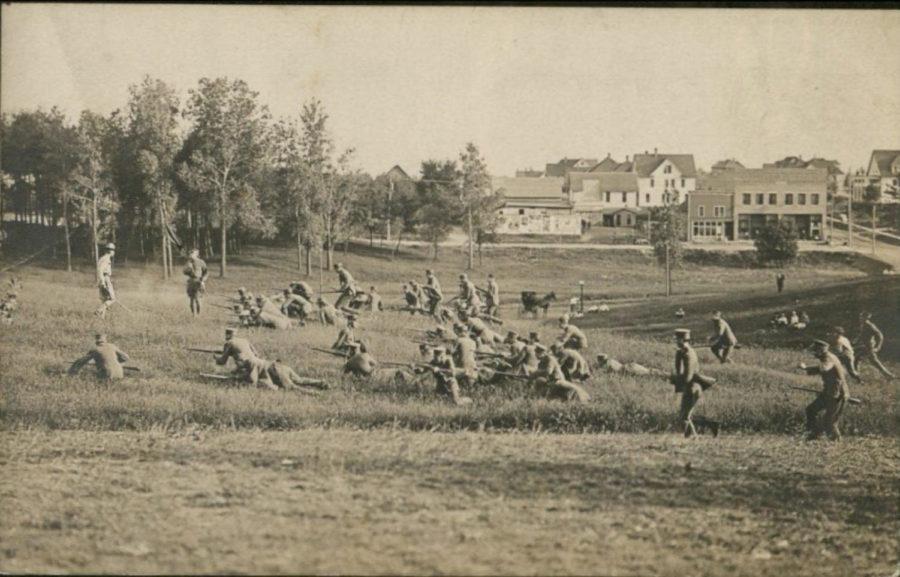Iowa State alumnus pieces together history of war, Lake Laverne
Photo Courtesy Alex Fejfar, Ames Historical Society
This postcard shows military training in the area that would become Lake Laverne. The back side reads “Military drill at Ames. Commander James Rush Lincoln, a former Confederate, General with flag, in command. General Lincoln is at left side of picture in front of troops. Picture taken probably in 1912 or 1913.”
April 24, 2017
As the world was on the brink of its biggest conflict to date, the Lake LaVerne area was used to prepare Iowans for combat.
That is what Benjamin Worrell, former Iowa State student, discovered after finding bullets while metal detecting in 2015.
The Daily has previously reported on Worrell’s findings, but since then, he has uncovered more information relating to the subject in the form of a postcard.
“One thing we couldn’t figure out was why the bullets were found so near the road,” Worrell said.
Worrell was referring to Lincoln Way, which existed at the time. It appeared that the bullets were fired toward Lincoln Way.
“My theory now is that when Lake LaVerne was built, because these bullets are dated from before [Lake LaVerne] was there, the dirt that was moved must have contained the bullets.”
Worrell said that the bullets appeared to be from the Civil War era. If that were true, then the area must have been used as a shooting range for some time even before World War I.
“Several people stepped up after the first article was written and tried to help identify the bullets, but for the most part, those people were unhelpful,” Worrell said. “But, the Ames Historical Society showed me a postcard that appeared to show the Lake LaVerne area being used for combat training.”
The postcard features a number of men in military uniform holding guns, apparently participating in drills.
The backside of the postcard reads: “Military drill at Ames. Commander James Rush Lincoln, a former Confederate, General with flag, in command. General Lincoln is at left side of picture in front of troops. Picture taken probably in 1912 or 1913.”
Worrell said that it has been hard to piece together this information because much of it was lost in a fire.
“In 1922, the Armory caught fire, and that’s where most of the records were stored,” Worrell said. “So a lot of the documentation that would have went along with this area being used the way it was probably burned with the building.”
Worrell said that he knew he had to look for a story behind the bullets because he had found so many of them.
“If it had just been a few, I would have just forgotten about them and went on with me life,” Worrell said. “But there were too many of them for it to be a coincidence.”
“I think there’s so many things out there with so much history just laying around,” Worrell said. “The problem is that we don’t know what a random hunk of metal or rock could be, so we just disregard them.”
Worrell encourages anybody who finds historical artifacts, no matter how small, to register their findings as an archaeological site. Instructions for doing so can be found here.
















